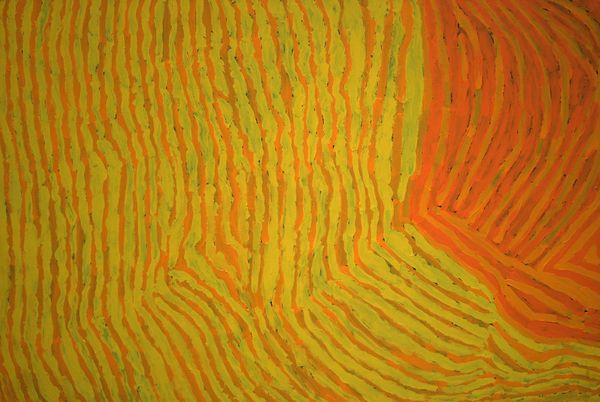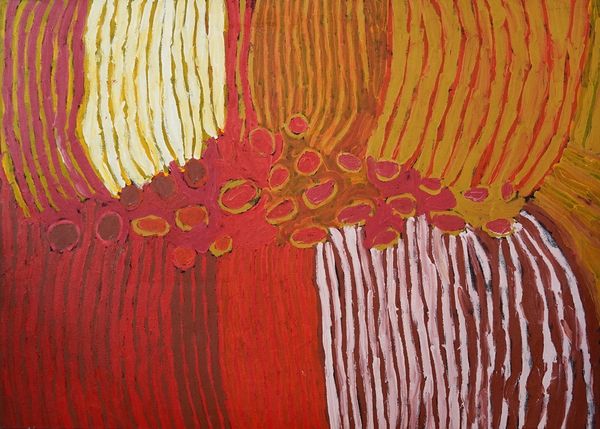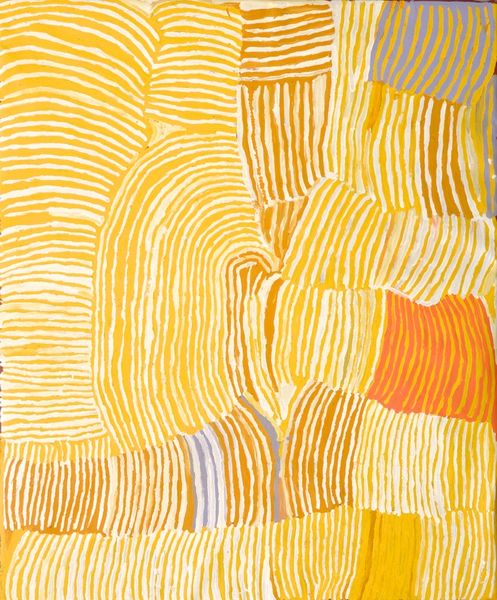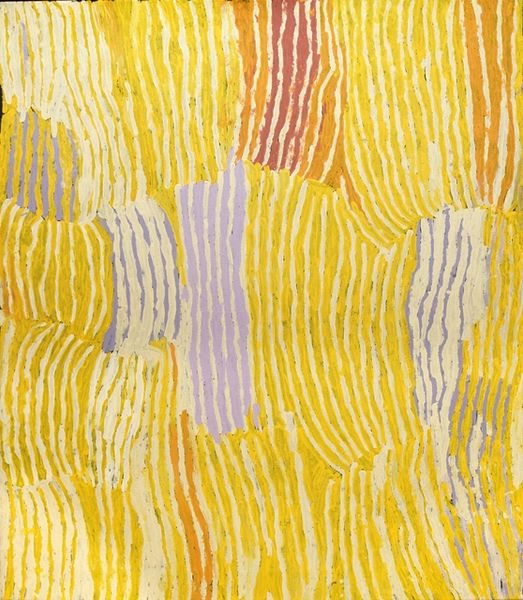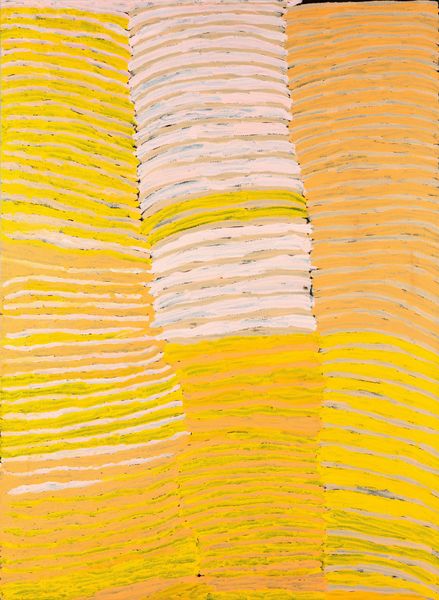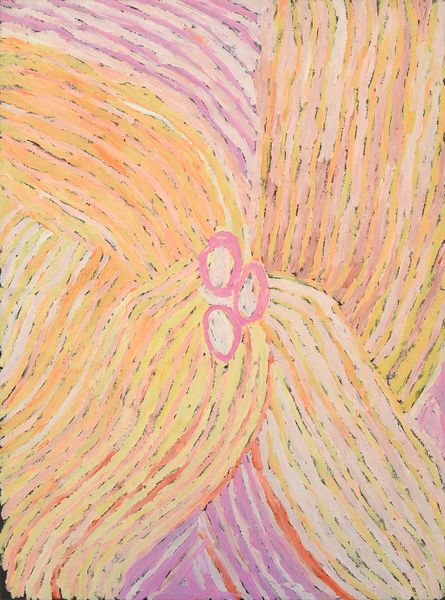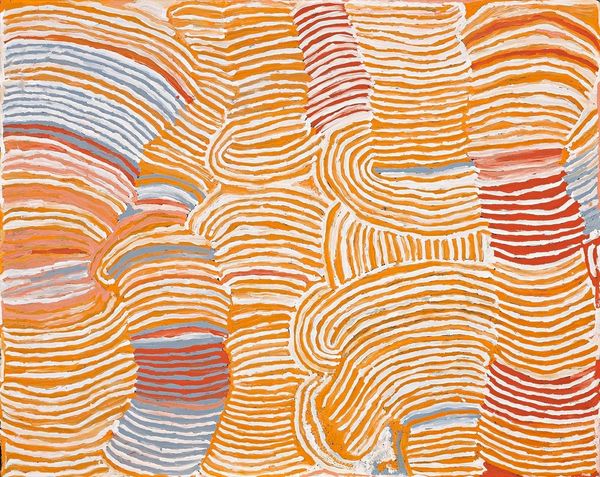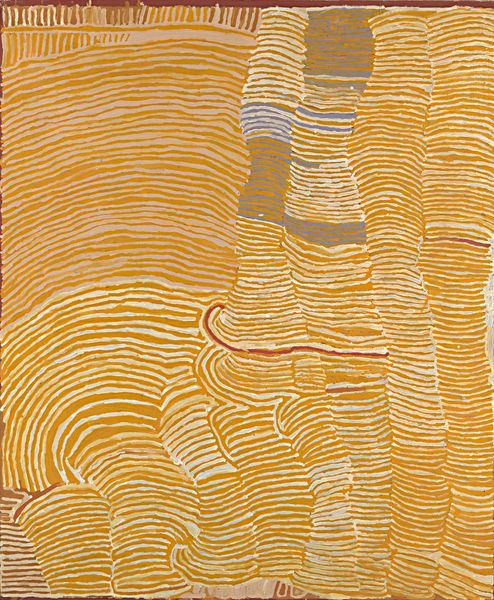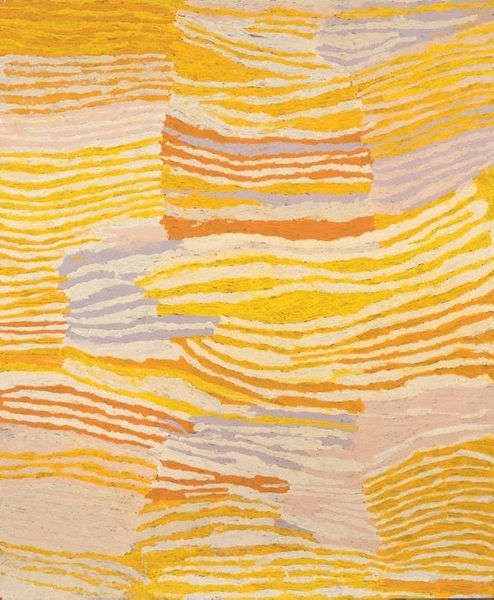
painting, acrylic-paint
#
abstract expressionism
#
organic
#
abstract painting
#
painting
#
acrylic-paint
#
geometric pattern
#
abstract pattern
#
organic pattern
#
abstraction
Copyright: Makinti Napanangka,Fair Use
Curator: What strikes me first is the radiating energy, a vibrant field of warmth in yellows and oranges. It reminds me of sunbaked earth and glowing desert sands. Editor: That’s interesting. Looking at Makinti Napanangka's "Hairstring and Rockholes," rendered in acrylic paint, I see how its seeming abstraction deeply reflects Indigenous Australian artistic traditions, and her own personal history as a Pintupi woman. Curator: Indeed. Though appearing abstract, it embodies a visual language rooted in cultural memory. The repetition of lines, those vibrant strokes, speak to continuous narratives and ancestral connections. The rockholes—sources of life in a harsh environment—become potent symbols. Editor: Yes, but I also see it pushing back against the historical erasure of Indigenous identity through enforced assimilation. This work can be interpreted as a reclamation, reasserting the importance of traditional knowledge and connection to Country through artistic expression. It’s an act of resistance and resilience. Curator: And that golden palette! It evokes the Dreamtime stories, those foundational myths of creation. Each carefully placed dot and line seems to hum with ancestral power. The painting holds more than it shows; it's layered with symbolic depth. Editor: While the vibrant colors invite you in, that formal beauty belies a history of oppression, displacement, and ongoing struggles faced by Aboriginal communities. This isn’t merely decoration; it's a deeply political statement, veiled in beauty. We must acknowledge the complex layers to truly honor the artist. Curator: It’s that very tension, isn't it? The surface luminosity veiling profound depths. It reminds us that even in apparent abstraction, cultural continuity persists, carrying narratives across generations. The energy feels palpable. Editor: Exactly. Engaging with artwork like "Hairstring and Rockholes" compels us to confront our own complicity in perpetuating colonial narratives, challenging us to amplify Indigenous voices and stand in solidarity with ongoing struggles for land rights and self-determination. Curator: Looking closer now, I recognize the strength, beyond just symbolic, inherent in her vibrant strokes. Thank you for this. Editor: My pleasure. There is more in this work, but let’s let listeners reflect, and consider ways to support Indigenous arts and activism.
Comments
No comments
Be the first to comment and join the conversation on the ultimate creative platform.

